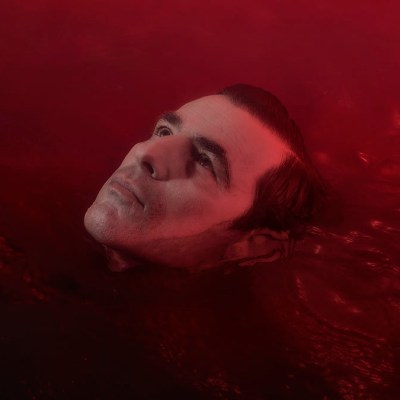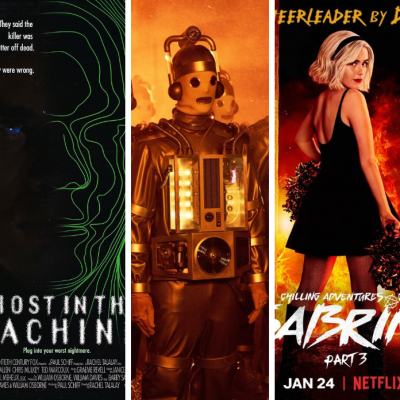Bram Stoker’s Dracula and the Seduction of Old School Movie Magic
We examine with Roman Coppola how Bram Stoker’s Dracula has barely aged in almost 30 years due to its hypnotic use of antiquated visual effects.
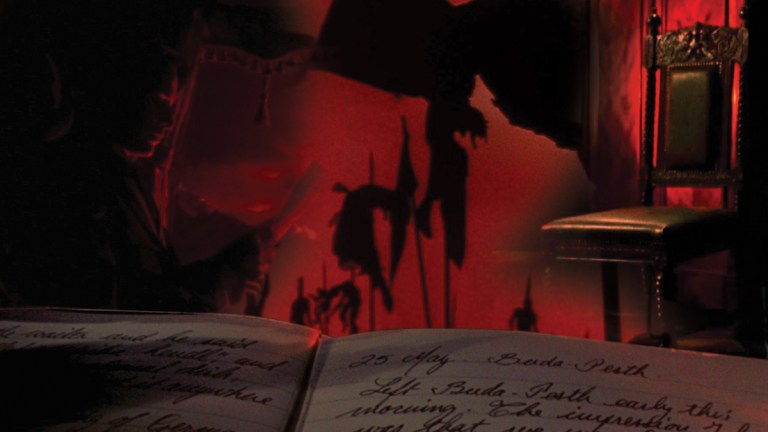
It was one of the most challenging shots in Bram Stoker’s Dracula. Sitting before Roman Coppola’s second unit camera was a 50/50 mirror, the kind that was once commonplace in any illusionist’s magic shop, but which hadn’t seen the inside of a Hollywood studio in decades. On the other end of the glass lay Winona Ryder in bed, ostensibly asleep but soon to be bedeviled by a monstrous vampire.
Yet co-star Gary Oldman wasn’t on hand that day. Instead, at about a 90-degree angle away from Ryder’s boudoir, stood a duplicate set of the same size and shape, but buried in black velvet Duvetyne. And in that blackness, smoke created by dry ice was oozing its way around the velvet. When lit by green lights and reflected in the mirror, a sentient emerald mist suddenly appeared in the same room as Ryder. Dracula manifested out of thin air.
“That was a good one, if I may brag a little, in that it was a backwards photography [shot] with a 50/50 mirror,” Roman says in 2020. It’s been nearly three decades since that day on set at the legendary Culver Studios, and Roman Coppola is a bit older and far more seasoned, yet when he looks back at what he and his team achieved on Bram Stoker’s Dracula, he can’t help but marvel. After all, you could now run a video taken by your iPhone in reverse with the swipe of a finger. But there they were in 1991, “puppeteering” dry ice fog in reverse, so it would appear to be sneaking below a mattress when reflected off a mirror and captured at a 45-degree angle in a camera that was running its film backwards.
In truth it’s more or less the same effect John Henry Pepper invented in 1862 to conjure a ghost on stage. Literal smoke and mirrors in the digital age.
When Bram Stoker’s Dracula opened in November 1992, it astonished the industry and silenced many of Francis Ford Coppola’s sharpest critics. Snarked about in the press beforehand as “Bonfire of the Vampires”—a reference to Brian De Palma’s misbegotten Bonfire of the Vanities (1990)—the whispers were that director Coppola had created a lurid and weird vampire movie based on one of the most oversaturated characters in fiction. Well, Bram Stoker’s Dracula was certainly lurid and weird, but in the best possible way.
Originally conceived as a Victorian man’s repressed anxieties about lust and passion being given demonic shape, Coppola’s vision for Dracula was entirely divorced from the pop culture image of Bela Lugosi in a cape. While the movie was marketed as the director of The Godfather going back to the 1897 source novel that no one had ever faithfully adapted (which turned out to be only partially true), the movie’s true appeal lies in its decadent imagery. It’s a marriage of lavish costumes, freaky makeup, and half-forgotten magician’s effects. And the last bit was given new life by Francis’ son, Roman, who became the film’s visual effects director.
Somehow it all came together, with performers such as Oldman, Anthony Hopkins, Tom Waits, and Ryder going so big that their cries threatened to burst through the soundstage walls. The hypnotic union thrilled audiences, who made Bram Stoker’s Dracula a surprise holiday blockbuster, and was ultimately celebrated by the industry, which awarded the movie three Oscars, including one for Eiko Ishioka’s dazzling costumes and Greg Cannon’s makeup. The irony is that, in its way, it was the industry’s skepticism toward Francis Ford Coppola that made the movie’s unusual vision possible.
“For some reason I always thought it was unfair I had the reputation of being a director who spent a lot of money, which is not really the case,” Francis said in an interview with film critic F.X. Feeney. “The only movie that I really spent a lot of money on, and went way over budget, was Apocalypse Now.”
Be that as it may, when Ryder first piqued Coppola’s interest in making a Dracula movie, which as it turned out was a favorite novel from his youth, he knew the studio would never agree to his first inclination: As with going to the jungles of the Philippines on Apocalypse Now or Sicily in The Godfather, Coppola initially imagined shooting Dracula in Transylvania and inside actual crumbling castles.
“I knew the studio would be a little leery of getting this director with three names to do this Dracula picture, and possibly go off to Romania, and it’d be a Heaven’s Gate scenario, or Apocalypse Now scenario, so I played into that. I said, ‘You know, we could go and make the film in Romania, we could go to the real Castle Dracula… or I could make it all in the studio… In fact, I’ll make the entire picture right in a soundstage, a group of soundstages right under your noses. They just loved it, they ate it up.”
That was how Francis pitched himself into the movie, but how he made it worthwhile stemmed from two separate ideas bleeding into one otherworldly vision: First that the laws of physics would never apply when you were in the presence of a vampire; and second, if he was going to attempt to authentically return to the Victorian world of Stoker’s 1897 novel, he also would return to the early world of cinema where the laws of physics were never even considered.
“The period of the turn of the century was the birth of movies,” Francis said. “And movies, as you know, largely came about because of magicians who started to use the cinema to make illusions…. That’s when I became excited about the idea of [having] this story 100 percent shot in soundstages and not only using illusions and magic, and effects, but using effects as they were done at the turn of the century, which was in-camera.”
Thus entered Roman Coppola. Only 26 when Bram Stoker’s Dracula went before cameras, Roman wasn’t necessarily his father’s first choice to lead the visual effects. While Francis’ accounts have varied over the years as to whether his first head of special effects quit or was fired, the one consistency in Francis’ telling is that modern effects experts were exasperated by the idea of using almost no optical printers or new digital effects, and instead focusing on in-camera tricks. “Absurd” was the word Francis heard. But as it so happened, his son already had a passion for magic and the old ways, absurd though they may be.
“I was involved [on the movie] already,” Roman says. “I was going to be second unit [director], and we wanted the effects and second unit all to be one group effort, and do that stuff live. And when I started to take certain leadership and do storyboards, and supervise certain preparation, it was just clear that I was able to direct these efforts in a way that was more in my dad’s wishes, which is to really genuinely, deeply embrace the idea of total adhesion to ‘how would they have done it back in the day?’”
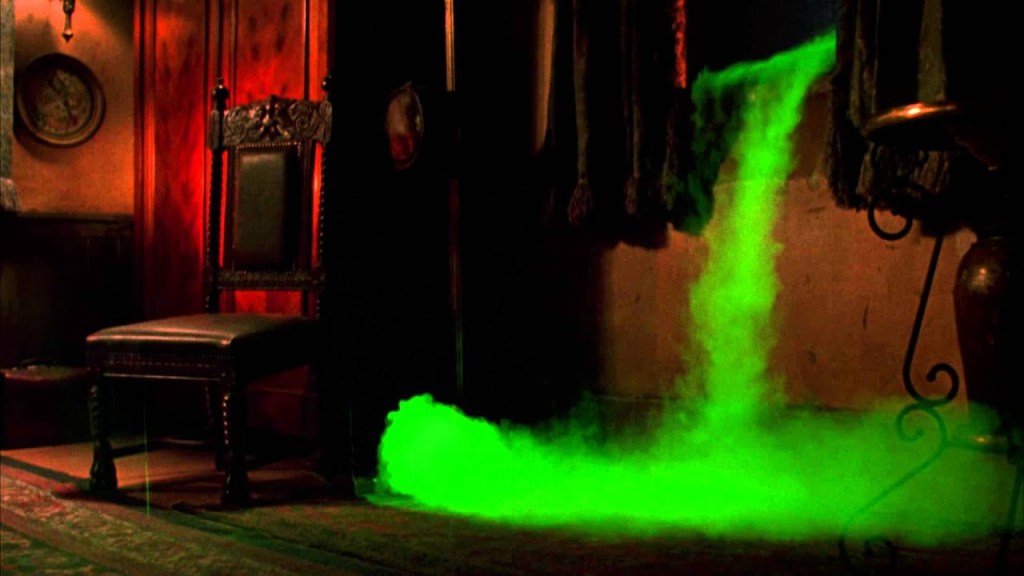
In retrospect Roman taking over leadership on the effects in Bram Stoker’s Dracula—to the point where he’s given the title card of “Visual Effects and Second Unit Director” in the end credits—seems natural. Ever since his uncle David Shire introduced him to theatrical magic as a young child, Roman has had a lifelong fascination with the tricks of illusion and sleight of hand. He still recalls boyhood days spent at Los Angeles’ Hollywood Magic store and San Francisco’s House of Magic, learning the trade of visual trickery, such as John Pepper’s “Pepper’s Ghost,” and staying up to watch Paul Michael Glaser in the 1976 TV movie The Great Houdini. In San Francisco, he saw Tony Slydini on stage.
“After 12 and 13, I stopped being so active,” Roman says. “But later, as a younger person in my 20s, I started to get back into it and get a lot of books, and collect certain apparatuses. It’s just something I found a real love for.”
Read more
It also perfectly positioned him to spearhead Dracula’s visual effects. And one of the first things Roman and his team did was curate a film reel, or “visual library,” of all the points of reference from classic cinema they could use as inspiration.
“The movies that were much more points of reference are a touch later, but still drawing on the same principles,” Roman says when we mention early cinema pioneers, including Georges Méliès. “Jean Cocteau was a particular influence, Beauty and the Beast [1946], Orpheus [1950], and Blood of a Poet [1930]. So those are all movies that we drew a lot of inspiration from.”
Indeed, during the scene where Keanu Reeves’ Jonathan Harker explores Castle Dracula, a single carved arm in the wall is holding a candelabra in homage to Beauty and the Beast. Meanwhile Mario Bava’s Black Sunday (1960) inspired the nightmarish imagery of Harker’s carriage ride through a desolate mountain range, with the ominous passing tree branches actually being grips whacking the carriage as it was rocked in place.
Other films in the reel might include F.W. Murnau’s Nosferatu (1922) or Carl Th. Dreyer’s Vampyr (1932), but Roman cites the biggest influences as being actual books on magic he turned to for research. Some were as old as Stoker’s novel itself. Erik Barnouw’s The Magician and the Cinema (1981) was a major touchstone on the movie; Sam Sharpe, author of Neo Magic (1932) and Conjurers’ Optical Secrets (1985) was another; and then crucially there was Magic: Stage Illusions, Special Effects and Trick Photography, which was written by Albert A. Hopkins in 1897.
Explains Roman, “Those books were the bibles of the research, and those have all sorts of references.” For instance, recall the grandiose prologue of the film. With baroque glee the movie begins not in 1897 but 1462. That is the year the real-life Vlad the Impaler repelled the Ottoman Empire and protected Christendom by slaughtering thousands of Turks. The sequence was Francis’ invention, and one he called his “Origin of Batman” scene on the set. But rather than actually film a battle scene, or even actual daylight, the warring portion of the sequence is completely captured via unnatural silhouette, with shadow puppets before a blood-red sky standing in for actual humans as they are impaled on a forest of pikes.
Says Roman, “If you get the book of Hopkins’ Magic, you will see other things like shadowgraphy, which is using shadow puppets. There was a guy named Caran d’Ache, who I think became famous because he’s the namesake of the Swiss colored pencil company. But he was the originator, or at least excelled in, shadowgraphy. And when you see the opening of Dracula, all those shadow puppets, that was inspired by an example from that book.”
This focus on the classical principles of stagecraft and magic, reverse photography and compositing images with a forced perspective, is the secret of Bram Stoker’s Dracula’s lingering appeal. As Roman points out, there were no effects they feared wouldn’t work. If they could achieve how things were done then, they’d appear inexplicable in the dawning age of digital effects.
“There’s a lot of steps and a lot of process that can be painstaking, but I don’t think we did anything that was pushing a boundary,” he says. “I think everything was an accepted principle that we knew, ‘Well, this is going to work if we do it right.’ There was nothing groundbreaking. We adhered to all the old tricks.”
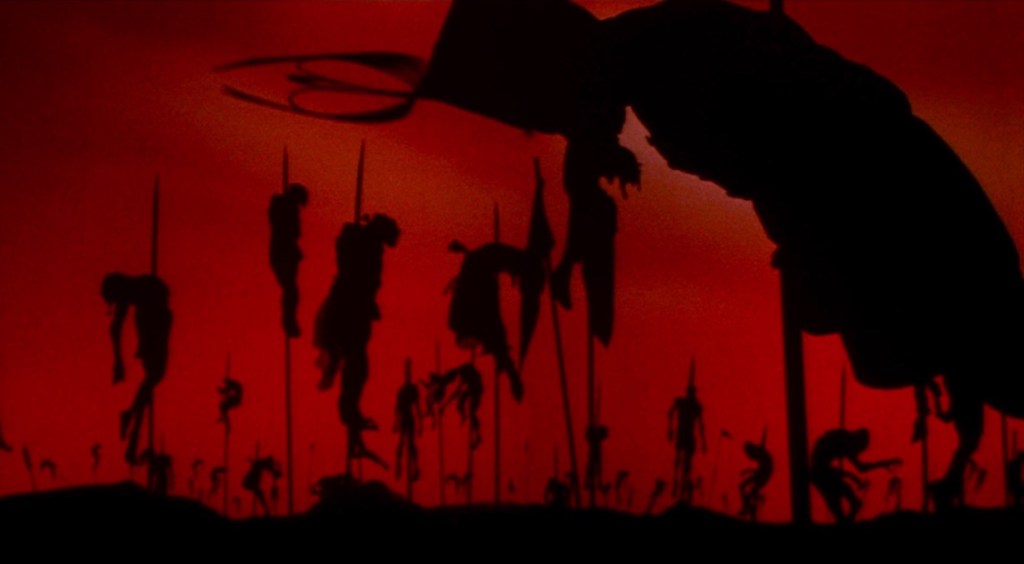
There could certainly be setbacks, Roman recalls during Dracula’s voyage to London on the doomed Demeter that they exposed the same negative to five passes of filming. This is to say they attempted to combine five separately filmed images as the camera swung on the set by rewinding the film before each new pass. But because the frame line was incorrect on one of the passes, the whole multi-step take was ruined.
But the effects they did achieve all have a potency that register as alien to our modern eye. Some can be as simple as running the film backward in the camera, giving a macabre, unnatural sense of movement as Sadie Frost’s newly turned vampire Lucy climbs into her coffin after being accosted with a crucifix. In reality, she was filmed simply climbing out of it. Others might be slightly more complex, such as a black matte box being used over multiple passes.
For instance, when rats appear to run upside down on a girder above Jonathan Harker in the castle, two passes were used. In the first, the camera was upside down with the black matte covering the top of the lens as rats ran across a piece of set; then the camera was turned upright, the film rewound, and the other half of the lens was exposed while the original portion was covered as Reeves was burned into the negative.
Among my personal favorites is the extreme perspective of Ryder’s 1462 Princess Elisabeta flinging herself from a castle parapet into a river, which Roman reveals “was basically a puppet with a forced perspective, and a little river below, [with] some tricks to make the scale look correct.”
Another was the much more complex series of techniques used during the vignette of Jonathan Harker traveling by train into Transylvania. In the finished film, Reeves sits in a shadowy train compartment with stark mountains out the window. Soon they fade away into darkness as Oldman’s predatory eyes appear on the horizon. Outside the train, Harker’s journal entry about the day’s travel is visible in the frame, running the length of the train track and just below the crossing transport.
“That was done by Gene Warren Jr. at Fantasy II [Film Effects], and that was multi-pass, multiple exposures,” Roman says. Among them was a rear projection created over two passes on the same piece of film. The first was comprised of multiple layers of the mountain range background moving at different speeds from right to left, while the camera moved left to right. In the second pass, the lights were turned out and Oldman’s eyes, as filmed by Roman, were projected as the only source of light onto the same background. All of this was then rear projected behind Reeves in a separate shot while he sat in his carriage. Conversely, in one of his close-ups, a map of 19th century Transylvania appears on his face via front projection.
And as for the journal in the same frame as the train? According to visual effects camera operator Christopher Lee Warren in “In Camera: The Naive Effects of Dracula,” they built a 20-foot wide replica of Harker’s journal entry so it could stand 10 feet in each direction between the camera and a miniature train, all to get the right type of sunset shadow being cast across its pages.
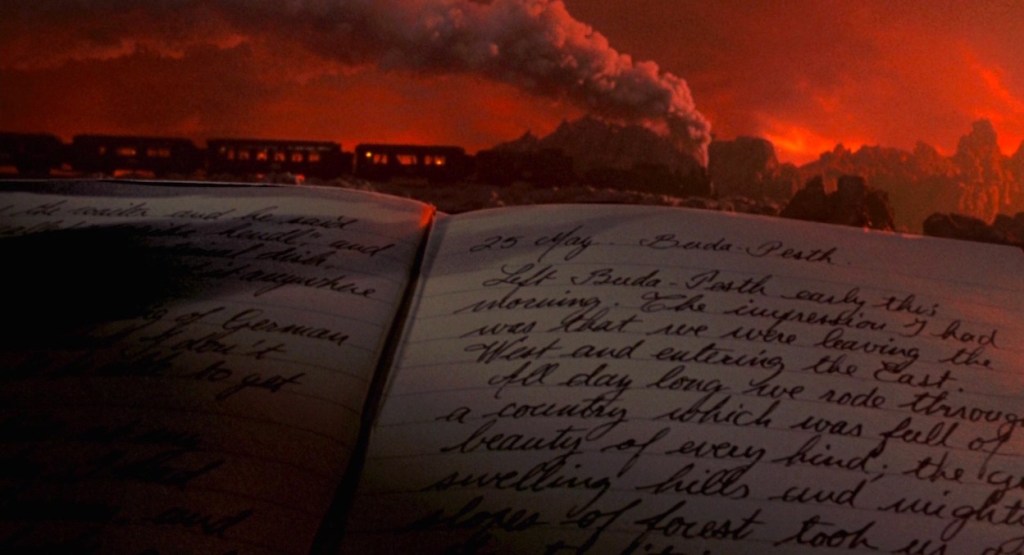
As just one in a string of intricate effects and set-pieces achieved by Roman and his team, the effects’ cumulative impact is immeasurable. In its way, Bram Stoker’s Dracula works on the level Francis wanted: He was able to bring it closer to Stoker’s world and plot, if not necessarily Stoker’s themes. As Francis more openly admits in recent years, when Ryder first approached him with a draft of James V. Hart’s script for Dracula, it was about a gushing love story between the dashing Count and Mina Murray Harker.
Ironically, that may be the element of the film that lingers most on subsequent pop culture depictions of Dracula. But it was Francis’ insistence on the script being rewritten, and rewritten again, to incorporate all of Stoker’s narrative beats, side characters, and supernatural wickedness, as well as the sense of a British society in upheaval. It was the dawn of a new century, the twilight of an old monarch, and an age for scientific discovery and technology, be it in the realm of blood transfusion… or moviemaking.
Bram Stoker’s Dracula is at its best when it drinks deeply from its dreamlike environment and atmosphere, capturing the base dread in Victorian culture of suddenly being confronted by what it deemed irrational or lascivious. And those elements mingle to gory delight when the aspects Coppola cared about most took center stage.
“The focus [was] on the actors, the costumes, and this unusual way of doing live-action and multiple take effects done in-camera,” Francis said. And when it’s Hopkins, Richard E. Grant, and the rest of the ensemble standing around Sadie Frost in an extravagant 19th century wedding dress while being filmed in reverse, its sense of tone and style is overwhelming.
On his end, Roman met that goal, and underlined the movie’s macabre madness, with ideas as primal and orgasmic as firing waves of blood out of air cannons during the scene where Dracula kills Lucy—“That was just a total last minute thing of like… ‘Hey don’t we have a bunch of blood bullets? Let’s put it in those air cannons and see what happens”—and it also paid off in old-fashioned Hollywood bravura, like the climax where Harker and the other vampire hunters chase Dracula down the Borgo Pass.
As second unit director, Roman shot much of that finale—as well as about 20 percent of the finished film—on the same soundstages where Merian C. Cooper filmed King Kong (1933) and David O. Selznick burned Atlanta in Gone with the Wind (1939). And a few years before Jurassic Park changed movie effects forever, Roman and his father were in that space, filming Reeves, Hopkins, and the rest approaching on horseback an enormous looming castle… which was created by Michael Pangrazio and Craig Barron by painting it on matted glass.
“That is remarkable that that would still be done in our time,” Roman reflects. “It’s hard to imagine that will ever happen again, latent image matte painting. It’s a great way to do something, but you need to have the skill to do it… and that’s just sort of a dying art.”

Not that Roman doesn’t still indulge the old ways. Many of his modern collaborators adore miniatures, for example. “I work with Wes Anderson often, and he likes to use miniatures, and he does it pretty liberally,” Roman says. “So I think there’s always a place for that.”
But composite shots? One where you put a sky or castle in the same shot with a miniature and live-action over multiple passes?
“It’s not possible to imagine someone wishing to do that on an optical printer, because for one, they don’t really exist [anymore],” Roman says. “Number two, it degrades the image, and there’s a lot of reason not to.”
Like the in-camera effects that fascinated two generations of Coppolas, even the optical printing techniques they were largely forgoing in 1992 have become obsolete in the age of computer generated imagery. Even the backwards-looking Bram Stoker’s Dracula has a single CG effect, with Roman conceding the transformation at the end of the movie, where demonic Dracula turns back into Prince Vlad in death, was done with CGI. But as Roman says, it was used judiciously at the conclusion as “a real punctuation mark.”
And perhaps Bram Stoker’s Dracula is itself a punctuation mark. A last hurrah for antiquated styles of moviemaking that were long gone, or about to be, and a chance to open a magician’s bag of tricks to fool the eye into believing, as Francis says, “the earth doesn’t rotate at exactly the right speed” in the presence of a vampire. It’s why the movie has aged like fine wine (if you drink the stuff), and likely will continue to do so while many other effects-driven movies are practically timestamped by their imagery.
“It was unique to a time and place,” Roman says. “I’m sure other movies, other horror movies in particular, over time will represent a time and a place, but this seems to be the one that represents that time and place.”
That time, and perhaps that of a century earlier.

